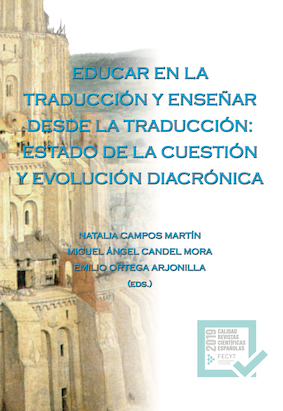Usability evaluation of a translation memory system
DOI:
https://doi.org/10.7203/qf.24.16302Keywords:
computer-assisted translation, translation memory systems, SUMI questionnaire, usability, SDL Trados Studio Abstract
Abstract
The use of Computer-Assisted Translation tools in translation classes has become a common practice for a little more than a decade. Even so, for students nowadays, the so-called digital natives, the teaching experience with this type of software is still far from being as easy as one would expect. This led us to ask ourselves what the real students’ attitudes were regarding the usability of software of this kind. This paper presents a usability evaluation for a leading desktop-based translation environment tool from the end user’s point of view. More specifically, the aim of the study was to assess the students’ perception of usability. For this purpose, at the end of two academic years, 95 senior students completed the Software Usability Measurement Inventory questionnaire, which is considered as a proven method for evaluating the usability of a software product. It measures five scales, i. e., Efficiency, Affect, Usefulness, Control, and Learnability. The analysis of the results obtained suggests that the students’ opinion about the global usability of the tool under evaluation is within the average, but not so much with regard to its learnability, which is the worst-rated scale. The only scale above average was Affect. These results show that greater emphasis is needed on the design of the tool evaluated in order to adapt to the real needs of users and actually improve the technological savvy of our translation students.
 Downloads
Downloads
Downloads
Published
How to Cite
-
Abstract775
-
PDF (Español)635
Issue
Section
License
 Este obra está bajo una licencia de Creative Commons Reconocimiento-NoComercial-SinObraDerivada 4.0 Internacional.
Este obra está bajo una licencia de Creative Commons Reconocimiento-NoComercial-SinObraDerivada 4.0 Internacional.
Authors who publish with this journal agree to the following terms:
- Authors retain copyright and grant the journal right of first publication with the work simultaneously licensed under a Creative Commons Attribution License that allows others to share the work with an acknowledgement of the work's authorship and initial publication in this journal.
- Authors are able to enter into separate, additional contractual arrangements for the non-exclusive distribution of the journal's published version of the work (e.g., post it to an institutional repository or publish it in a book), with an acknowledgement of its initial publication in this journal.
- Authors are permitted and encouraged to post their work online (e.g., in institutional repositories or on their website) prior to and during the submission process, as it can lead to productive exchanges, as well as earlier and greater citation of published work (See The Effect of Open Access).



